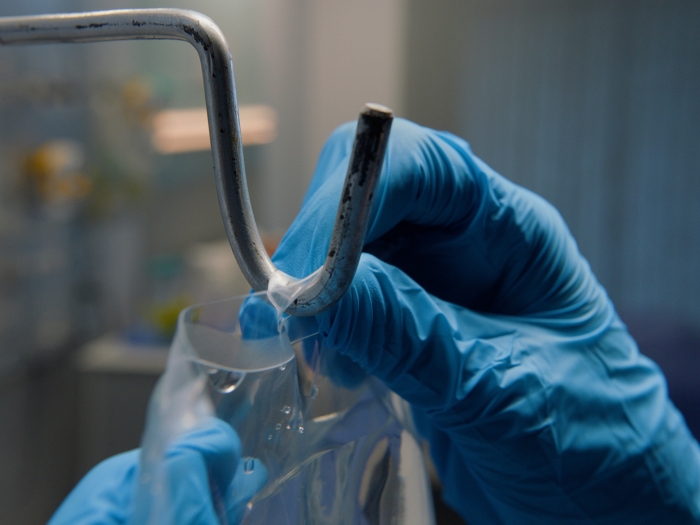Screening rates for the hepatitis C virus remain low for baby boomers, a high-risk population for the disease. A Michigan Medicine specialist explains why testing is essential.
1:00 PM
Author |

A majority of baby boomers aren't being tested for hepatitis C, a liver-damaging virus that can go undetected for decades. Left untreated, it can lead to liver failure or liver cancer.
MORE FROM MICHIGAN: Sign up for our weekly newsletter
Approximately 3.5 million people are chronically infected with hepatitis C in the United States; 80 percent of them are boomers.
That is why the U.S. Preventive Services Task Force in 2013 recommended that boomers, whom it defines as anyone born between 1945 and 1965 — be screened for the infectious disease.
Despite that advice, a study published in the American Journal of Preventive Medicine revealed testing rates among that age group increased only slightly — from 12.3 percent in 2013 to 13.8 percent in 2015.
The disconnect likely isn't intentional.
"Patients aren't asking because they don't know that they may be at risk," says Robert J. Fontana, M.D., a liver specialist in Michigan Medicine's hepatology program. "It isn't really a topic that comes up in common conversation."
Fontana links the silence to a combination of factors. He thinks patients in that age group need to be better educated about the disease. Physicians, likewise, must remember to call attention to the screening's necessity during office visits with their patients.
Still, there is a stigma associated with the virus because it's an infectious disease, Fontana says.
To dispel myths and encourage more testing, Fontana explains why baby boomers are at a higher risk and provides facts about hepatitis C status, transmission and treatment.
Why are baby boomers urged to get screened?
Fontana: Studies show baby boomers have a higher chance of harboring the virus than the rest of the population because there was no widespread screening of the blood supply before 1992. Many baby boomers could have gotten infected from contaminated blood and blood products before universal precautions were adopted.
How can you get the virus?
Fontana: Hepatitis C is primarily spread through contact with blood from an infected person. You can get the virus if your mother gave it to you at birth, if you've had a blood transfusion before 1992 or through intercourse with an infected person. You can also contract the virus if you've shared razors or toothbrushes or injection drug needles with an infected person.
SEE ALSO: Antibiotics and Liver Injury: What's the Relationship and Risk?
What are the symptoms?
Fontana: Hepatitis C is most commonly asymptomatic. You can live well for decades 30, 40 or 50 years and not know you have it. That's the problem; it's a sneaky virus. Most people have no symptoms that would clue them or their doctor in. Therefore, it behooves the doctor to know if their patient is a person who has a risk factor or if he or she is a baby boomer.
Is it curable?
Fontana: The screening recommendations came out a few years ago because we now have highly effective and safe therapies that are curing people. These new drugs have cure rates of 90-plus percent. The treatments are so good now. What doctor wouldn't want to cure his patient of a curable disease? What patient wouldn't want a doctor to look for a curable disease in them? It goes without saying.
Is treatment painful?
Fontana: In the past four years, all of the oral therapies that have been developed to treat hepatitis C are better tolerated and have a cure rate greater than 90 percent.
What can physicians do?
Fontana: Implementing screening for the entire cohort of baby boomers is challenging. One of the ways we're going about it here at the University of Michigan is through the electronic medical record. We created a best practice alert for primary care doctors so that if someone fits the baby boomer age group, which is easy to find out, there is a screen that pops up and says this patient is a boomer and you should consider testing him or her for hepatitis C.
We studied that here, and we showed that before we did the screen pop-up, the rate of testing was 10 to 15 percent. After the reminders, all of a sudden that number went up to 80 percent. That is a simple, low-cost solution.

Explore a variety of health care news & stories by visiting the Health Lab home page for more articles.

Department of Communication at Michigan Medicine
Want top health & research news weekly? Sign up for Health Lab’s newsletters today!





